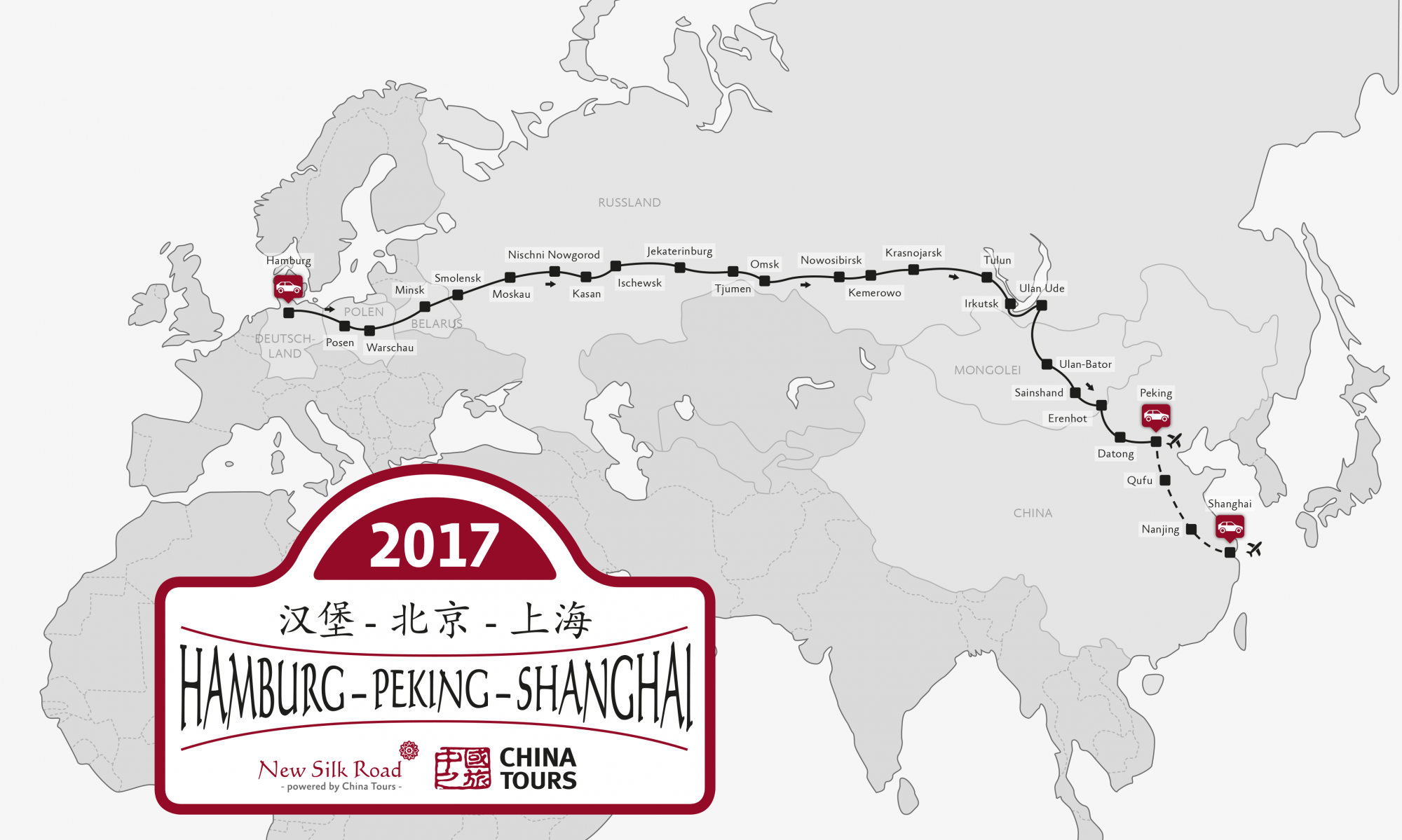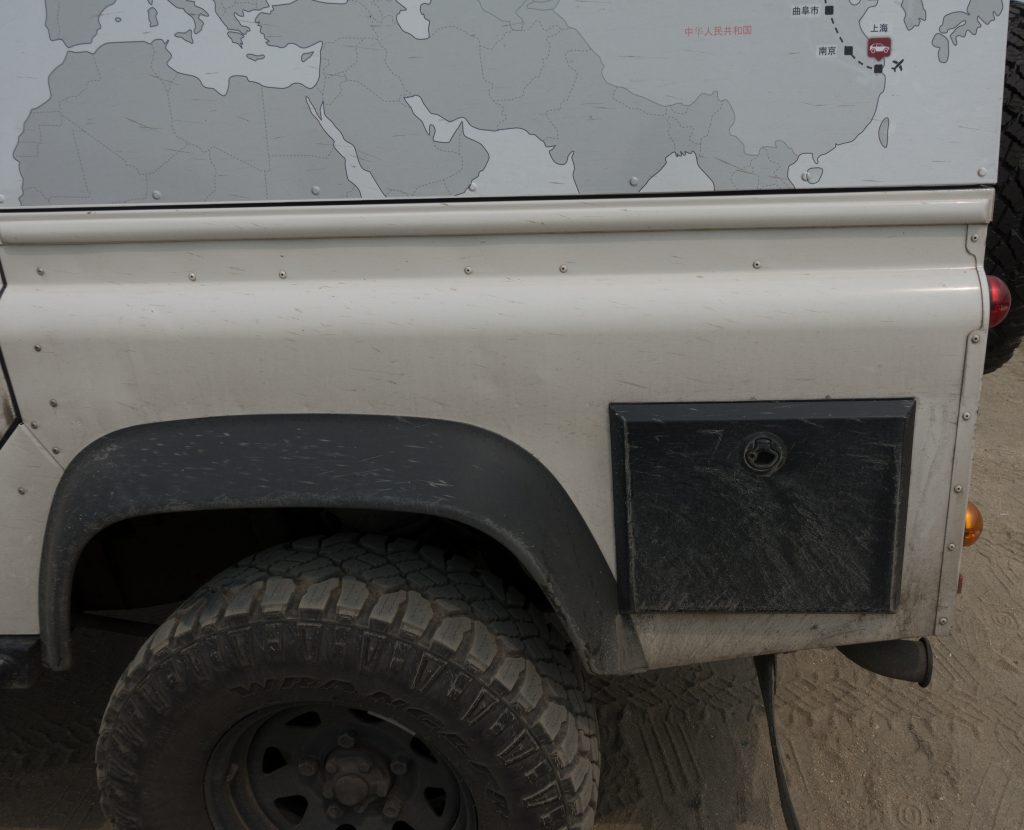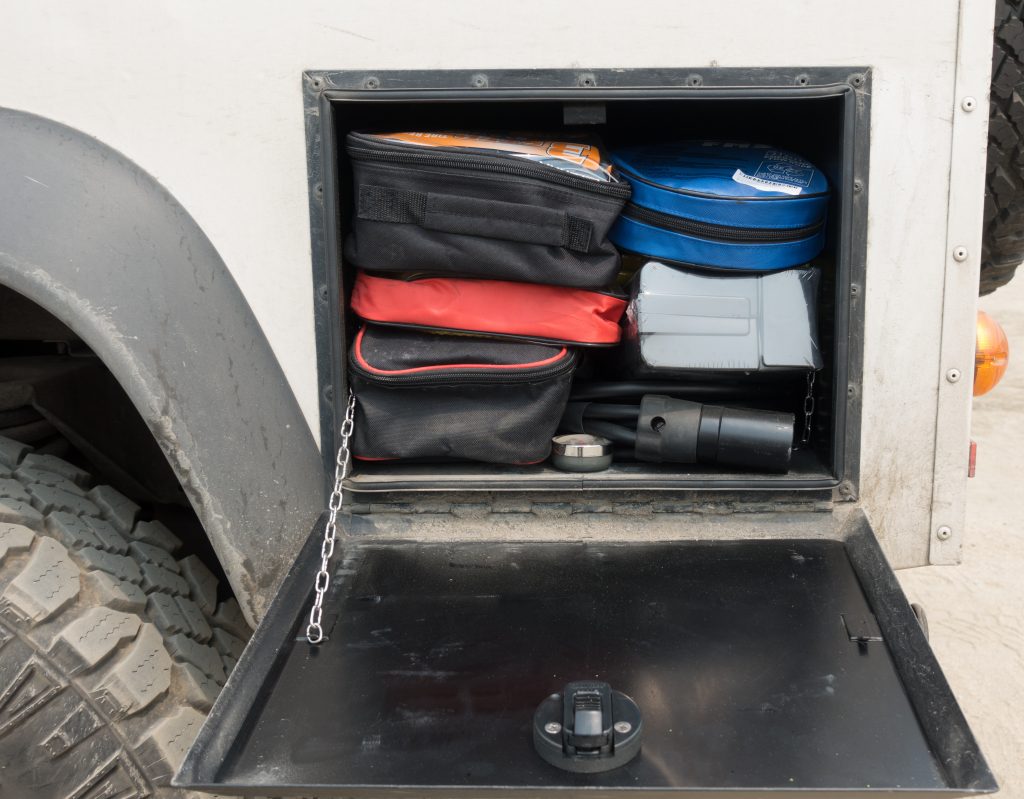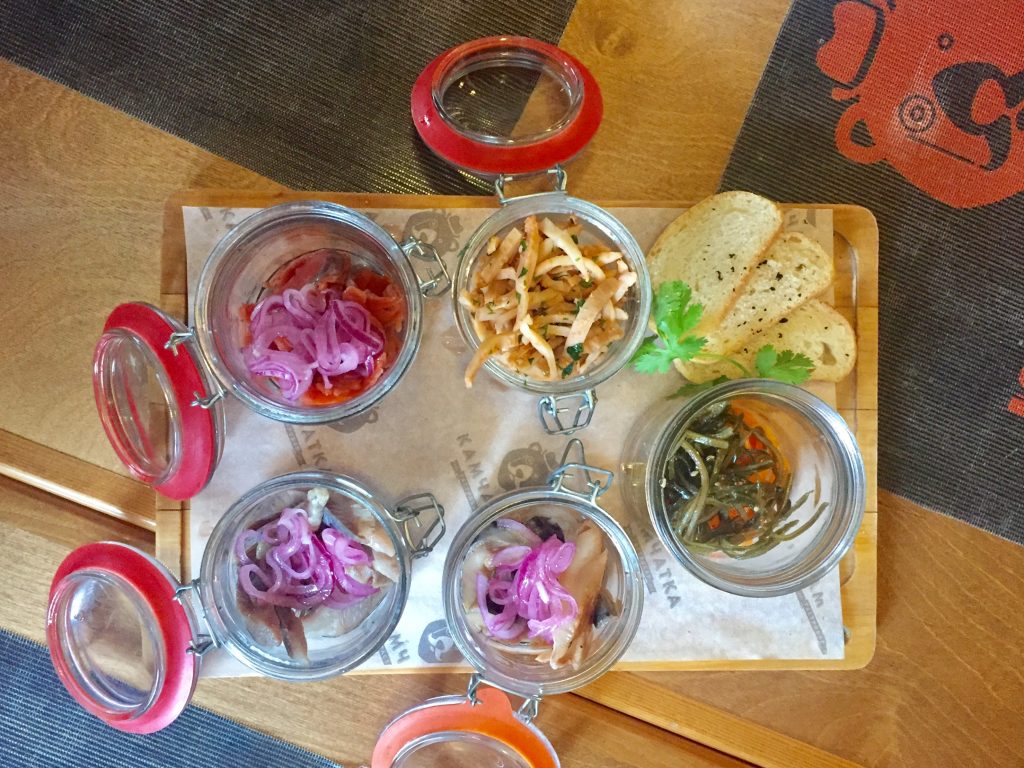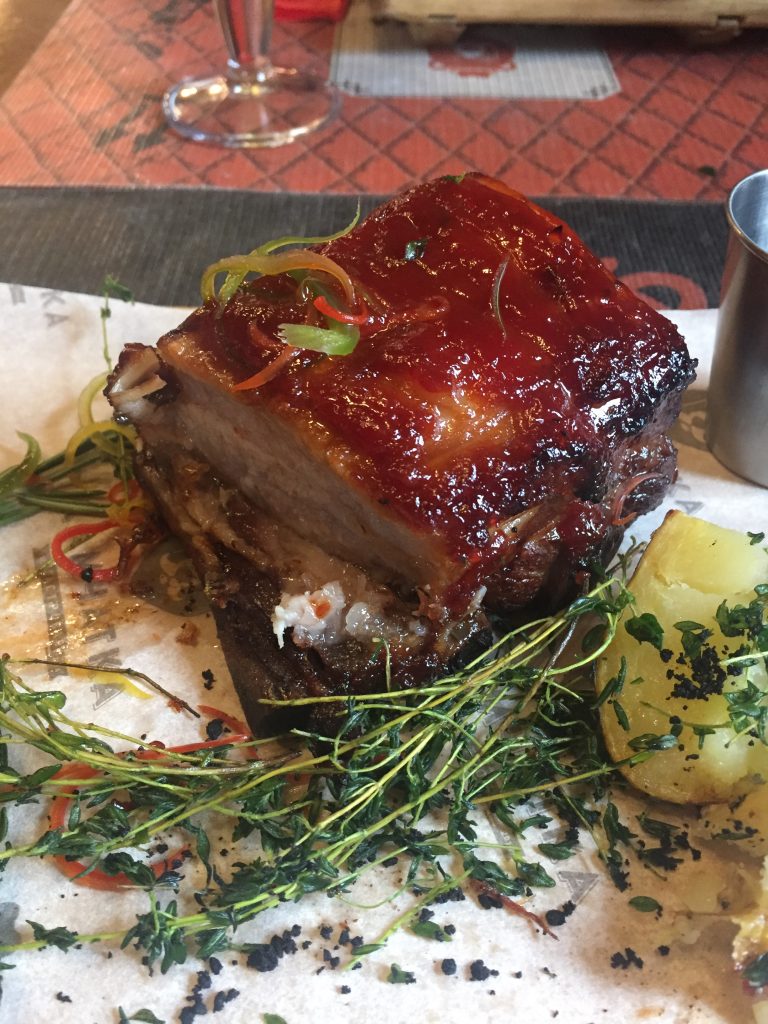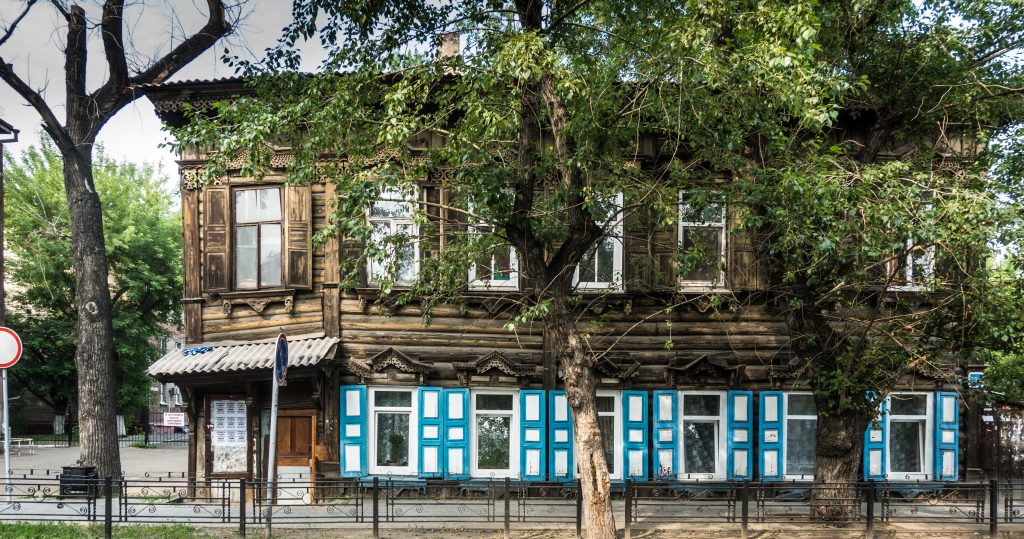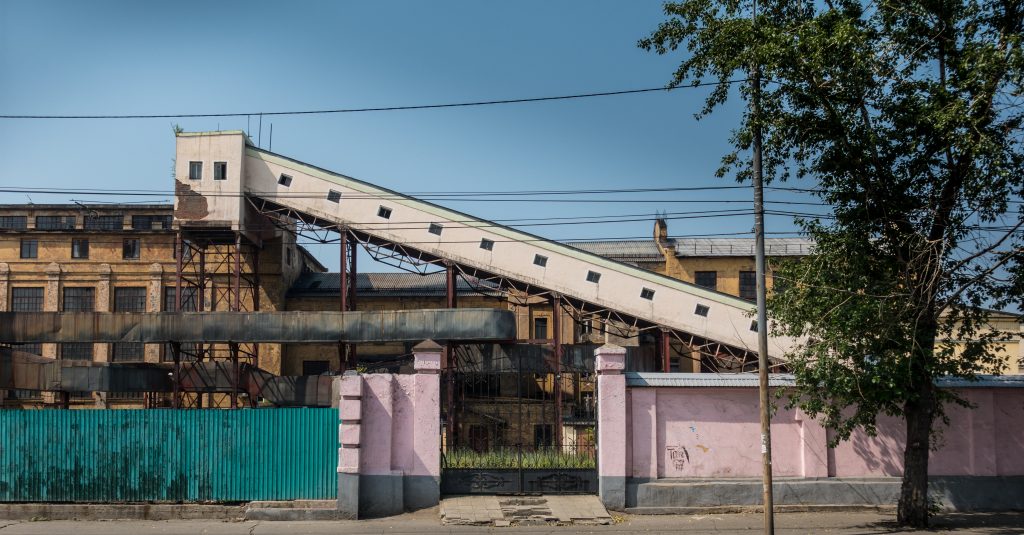Ok, vielleicht bin ich ein wenig egozentrisch, aber wir haben ein dafür für völlig ungeeignetes Fahrzeug für ein Heidengeld einigermaßen reisetauglich gemacht, wir ertragen härteste Schläge, Enge, leben mit lächerlichen Scheibenwischern und -waschdüsen (Nicht-Eingeweihte würden Lachkrämpfe bekommen), eine gerade ausreichende Klimaanlage, wir kämpfen uns über 9.000 km bis in die Mongolei vor und wenn man einmal die Unterstützung des Herstellers braucht, der sich damit rühmt, dass die Fahrzeuge überall auf der Welt eingesetzt werden, dann versagt er nahezu völlig und stattdessen springt ein Mitbewerber als weisser Ritter ein. Sollte Der Dicke jemals von uns gehen (was wir um Gottes Willen nicht wollen), dann wird das nächste Auto jedenfalls ein Toyota Land Cruiser. Das ist mal sicher.
Der Reihe nach. Bereits gestern hatte uns Land Rover Mongolia, vertreten durch Wagner Asia Automotive, mitgeteilt, dass kein geeigneter Tankdeckel vorhanden ist. Ok, was tun? Eigentlich würde eine provisorische Lösung mit Folie und Gummiband oder Kabelbinder völlig reichen, aber wir wollen bei der chinesischen TÜV-Prüfung keinerlei Probleme haben. Die Team-Mitglieder, insbesondere unser bastelfreudiger Biker haben sehr gute Empfehlungen, aber insbesondere die Idee, dass Tankstellen Not-Deckel haben, erweist sich nicht als wirklich zielführend. Wir könnten Karl May’sche Ölseen vortäuschen oder bis an den Rest unseres Lebens eine saubere Windschutzscheibe haben, aber Tankdeckel – Fehlanzeige.
Ich habe eine andere Idee: Toyota ist der grösste und relevanteste Autoproduzent der Welt (Entschuldigung Volkswagen), sehr gut in der Mongolei vertreten und produziert neben diversen PKWs eine Armada an Geländewagen, Kleintransportern und Bussen. Da muss doch ein passender Tankdeckel dabei sein. Gegenargumente: Die Jungs in Solihull fanden Zoll schon immer sympathischer als Zentimeter, es ist also unwahrscheinlich, dass da irgendetwas kompatibel ist.
In Anlehnung an das “sete – um” von 2014 (ich bekomme immer noch Gänsehaut, das grösste Fussballspiel, das es jemals gab), hier die Geschichte:
1:0 Toyota
Die Zahl der Toyota-Vertretungen ist groß, während Land Rover genau eine in der gesamten Mongolei hat.
2:0 Toyota
Als wir auf den Hof von Tavan Bogd Motors fahren, sehe ich schon einen holländischen HJ79. D.h. die Verständigung dürfte funktionieren. Der nette Rezeptionist spricht dann auch vermutlich besser Englisch als ich. Hier sind wir richtig.
3:0 Toyota
Obwohl wir keinen Toyota haben, kümmert man sich um uns vorbildlich. Der Rezeptionist bittet den Leiter des Service, sich unseren Tankstutzen anzuschauen – und das war vermutlich der alles entscheidende Beitrag zur Lösung, denn der Fachmann identifiziert einen Land Cruiser 200-Deckel als mögliche Lösung. Leider ist der nicht vorrätig.
4:0 Toyota
Aber der Rezeptionist bietet sich an ein paar Telefonate zu führen (“weil die vermutlich kein Englisch sprechen”) und kommt zurück mit der hoffnungsvollen Nachricht, dass Khet Motors, ein weiterer Händler, einen entsprechenden Tankdeckel hat…nichts war bisher ausgemessen, sondern nur der Meister hatte eine Idee, aber es war die heisseste Spur, die wir hatten.
Auf dem Weg zu Khet Motors kommen wir an Land Rover Mongolia vorbei. Also nichts wie rechts rein, denn die Hoffnung stirbt zuletzt. Vielleicht war das gestern ja nur ein Missverständnis oder der Funke ist per Telefon nicht so richtig übergesprungen. Aber nein. Während der Start bei der Rezeptionistin noch vielversprechend war, enden wir danach in der Service-Hölle. Irgendwie hat man nicht das Gefühl, dass die jeweiligen Gegenüber einen Hauch an Empathie oder Engagement mit sich bringen. Ein Tankdeckel ohne Schloß ist anscheinend doch da, dann aber wieder nicht und tja, Beschaffung dauert 8-10 Tage….uns bleibt fassungsloses Stauen, ein “Danke, grossartiger Service” und ein völlig frustriertes Davonfahren.
5:0 Toyota
Khet Motors ist nur per Geländewagen erreichbar. Die Piste dorthin – mitten in der Stadt wohlgemerkt – ist so abenteuerlich, dass wir echte Zweifel haben, dass die Adresse stimmen kann. Aber wir habe nichts zu verlieren und fahren bis zum bitteren Ende, bis der Google Maps-Punkt bei der Adresse ankommt – und siehe da, Firmenschild, Gebäude, Kundenparkplatz. Die Empfangshalle ist eine solche. Neunzig Prozent sind ungenutzt. Eine Rezeptionistin schickt uns in die hinteren Räume zum Service. Als ich die Reparaturhalle sehe, will ich es zunächst nicht glauben: Fußballfeld-groß ist die Halle, alles extrem sauber und ordentlich. Das Ersatzteil- und Service-Büro wird durch eine Managerin straff organisiert. Der zuständige Sachbearbeiter kann zwar kein Wort englisch, aber man verständigt sich per Händen und Füssen und Fachbegriffen. Per Co-Browsing(!) klickt er sich durch den Katalog und identifiziert den eventuell passenden Deckel.
6:0 Toyota
Wir müssen das Teil nicht auf Verdacht kaufen, sondern der Mitarbeiter kommt mit uns zum Auto und probiert es aus – es passt!!!!! Das letzte Mal war ich (glaube ich) nach einer bestandenen Lateinprüfung so glücklich!
7:0 Toyota
Die letzte Frage können wir Vorort mangels Verständigung nicht klären: Ist der Tankdeckel belüftet? Das ist unbedingt erforderlich, denn andernfalls würde die Kraftstoffpumpe den Tank wie eine Cola-Dose falten. Ehrlich. Auch per Internet findet sich keine Antwort. Also bauen wir zunächst einmal eine provisorische Lösung: Der Deckel wird nicht komplett zugedreht und damit er nicht verloren geht, verklebe ich die Aussparung, in der die Tanköffnung ist, mit Panzertape. Nur ein Schlitz bleibt frei.
Als es die Zeitverschiebung hergibt, rufe ich Toyota Deutschland in Köln an und erkläre mein Problem. Nach Durchgabe der Teilnummer verspricht man mir einen Rückruf, der nach 30 Minuten prompt kommt. Deckel ist nicht belüftet. Schade, aber alleine die Tatsache, dass sich Toyota um einen 15-Euro-Kunden (so viel kostete der Deckel) kümmert, ist klasse.
…und wo bleibt der Punkt für Land Rover?
7:1 Land Rover
Immerhin war hilfreich, dass Land Rover ein Tankstutzengewinde und -durchmesser verwendet hat, das/der anscheinend gewissen Standards gehorcht. Danke für nichts.
Ok, maybe I am a little bit egocentric, but it cost us a fortune to upgrade a car, that is factor-fresh certainly not a well equipped and comfortable travel vehicle. We took thoughest hits to the back, accepted laughable room for our legs, lived with ridiculously working windscreen wipers and washer jets (non-insiders would not believe it), accepted an A/C which barely is capable to cool down the car in case of outside temperatures above 30 degrees Celsius. We wrestled through 9.000 kilometers to Mongolia – and the manufacturer and its service organization delivered a total fail. But a competitor played the white knight. One is for sure: If The Fat One – for whatever reason – gives up the ghost, our next overland vehicle will be a Toyota Land Cruiser. No question about it.
But one after the other. Yesterday Land Rover Mongolia, represented by Wagner Asia Automotives, already informed us, that they do not have a fitting fuel cap. Ok, what’s next? To be frank, I could live with a provisional solution which involves a foil and rubber strap or cable fixer, but I am a little bit concerned about the Chinese MOT. The others in the group had several good proposals, but especially the idea to look at fuel stations did no work. We certainly could refill a noteworthy part of the now empty oil reserves in the near east or would have been able to clean our windscreen for the rest of our life in any car you can imagine – but no fuel cap.
I followed a slightly different approach: Toyota is the biggest and most relevant car manufacturer in the world (sorry Volkswagen), excellently represented in Mongolia and manufactures beside a full range of passenger cars also light trucks, SUVs, off road cars, mini busses and so on. Chances are good that one of these models have a fuel cap that fits on our car. Only problem: the guys in Solihull really like their inches and yards (sorry folks beyond the channel and the big pond) and it is not likely that they adapted an international standard.
In rememberance of the “sete – um” of 2014 (em, if you do not remember the 7:1 between Germany and Brazil in the Word Cup semi-final 2014, you should really read this – I still get goosebumps, really, biggest game of all times) here is my story:
1:0 Toyota
The number of Toyota distributors is big, while Land Rover has exactly one representation in Mongolia.
2:0 Toyota
When we entered the premises of Tavan Bogd Motors I noticed a heavily modified HJ79 from The Netherlands – seems that English is not a problem. And indeed, the receptionist certainly speaks better English than me. We are at the right place.
3:0 Toyota
Despite the fact that we do not have a Toyota, everybody treats us attentively. The receptionist asked the head of the service department to have a look at our fuel opening – what was most likely the decisive step towards a solution, because this genius identified a Land Cruiser 200 fuel cap as the potential best fit. Unfortunately the branch had none available.
4:0 Toyota
But the receptionist offered to make some calls (“they might not speak english”) and came back to me with the inspiring information that Khet Motors, another distributor, has one cap in its magazine…nothing was certain or measured, but it was the best idea we had so far.
On our way to Khet Motors we passed Land Rover Mongolia and of course we stopped, because hope dies last. Maybe it was all a big misunderstanding yesterday. But no. While the start was good when we approached the receptionist, she send us to a real service hell. You never felt a glimmer of interest, empathy or engagement. For some moments it seems that a cap without key is available, but then not and by the way: Sourcing would last 8 to 10 working days…we left the premise nearly speechless. “Thank you very much, great service” was they only sentence I could say.
5:0 Toyota
Khet Motors is only reachable by real off road cars. The dirt road – in the middle of the town – is so hazardous that we had considerable doubts that the given address is correct. But we had nothing to loose and followed the instructions to the bitter end – until the Google maps dot arrived at the address. And here we are: Nameplate, building, customer parking. The entrance hall was enormous and unused for 90% of the space. A receptionist sent us to the service facilities in the back. When I entered the workshop I could not believe it: A size of a football field (Soccer!!!!), extremely clean and tidy, the parts and service department was under strict supervision of a manager. She helped a little bit, because her employees did not speak English. With hands and feet we communicated. They use co-browsing(!) when looking up the parts in the catalog.
6:0 Toyota
We did not have to buy the replacement part on spec. Instead one of the guys accompanied us to the car, tried the cap – and it fitted!!!! The last time that I felt the same was when I passed my last Latin exam (at least I think so).
7:0 Toyota
Last question which we could not clarify at Khet Motors: Is the cap ventilated? That is a vital requirement, because otherwise the fuel pump would vacuum the tank and fold it like a Coke can. Really. The internet also brought no clarity. To be on the safe side I constructed a provisional solution: I let the cap a little bit open and closed the fuel cabinet with duck tape so that the cap could not disappear.
Finally I called Toyota Germany in Cologne and explained my problem. I gave them the part number and they called me back after 30 minutes. Unfortunately the cap is not ventilated. Bad luck, but the fact that Toyota answered that promptly to a request by a 15-EURO-customer is great.
…and where is the goal for Land Rover?
7:1 Land Rover
At least Land Rover decided to use a metric thread and diameter for the fuel opening. Thank you for nothing.
